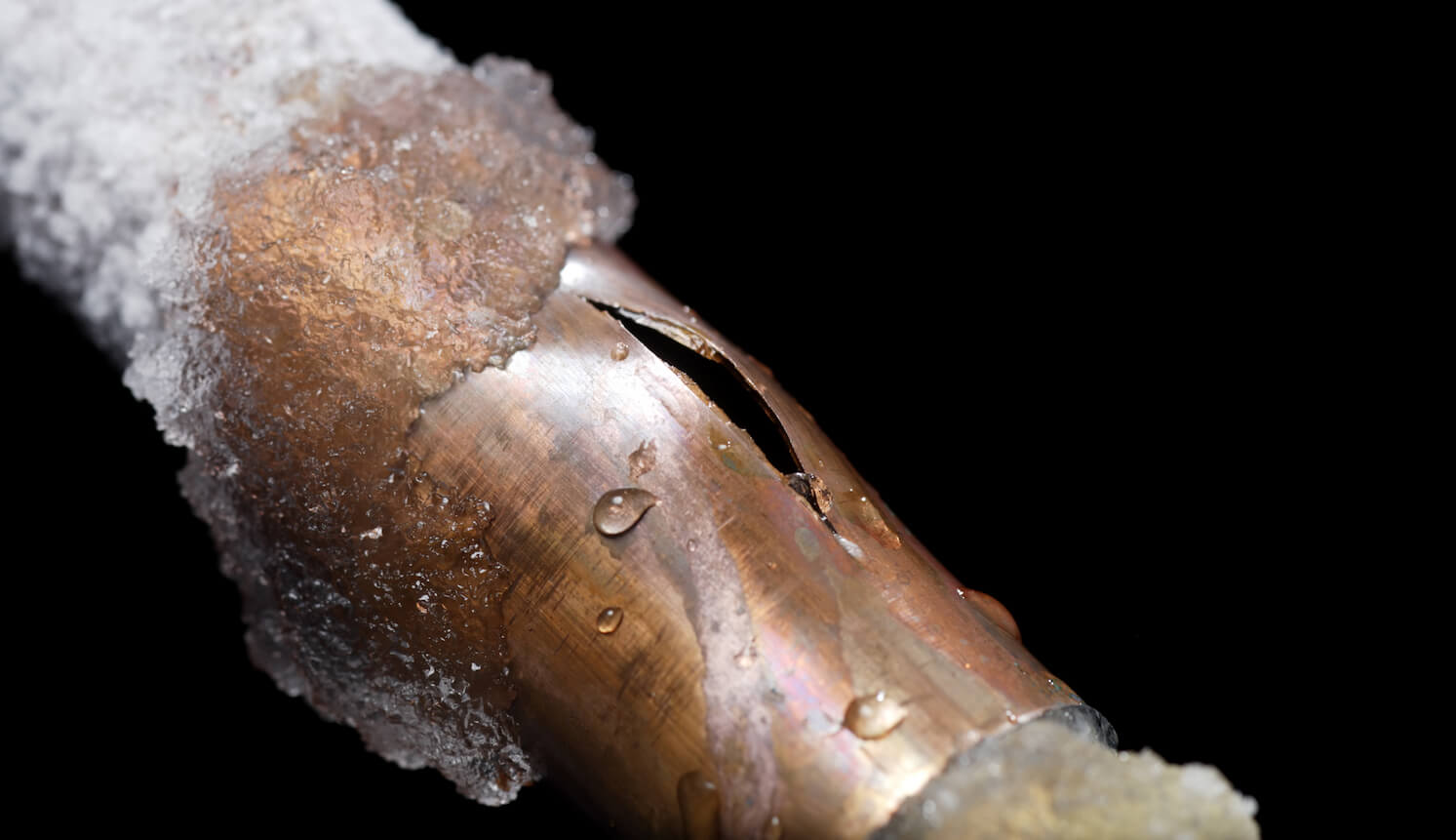By Nicolas Geoffroy, P.Eng., Ph.D.
As is the case almost every winter, the extreme cold weather episode that affected Eastern Canada in the last few days has unfortunately caused a lot of water damage in buildings. We thought we would take the time to explain why, in a few lines.

This phenomenon is mainly due to two causes.
First, water is one of the very few substances that expands when it freezes. The difference in density is not huge, around 9%, but this slight expansion is enough to significantly increase the pressure in closed systems, such as for drinking water or sprinklers.
In buildings, frozen pipes indicate poor insulation or heating. Often, the problems are found at the beginning of winter, following recent work, or during exceptional cold spells like the one we recently experienced.
CEP has conducted laboratory freezing tests, and found that pressures of 3000 psi are sometimes reached in copper pipes with an ice plug. This is approximately 50 times the normal operating pressure!
At these extreme pressures, the weakest link in the system will fail. It could be the pipe itself, the solder, a valve or a tap. We even carried out a test on a valve that had started leaking through the handle and had become airtight again after the thaw! Since the pressure is transmitted everywhere in the network, the break does not always occur at the location of the ice plug.
Also, pipes that freeze, even copper, will not always fail, occasionally they are able to deform to accommodate expansion. Some materials, such as PEX, are also generally resistant to freezing since they are able to swell following a rise in pressure.
In short, damage resulting from freezing is sometimes unpredictable and finding the cause (e.g., poor insulation, broken furnace, etc.) often requires a multidisciplinary approach. CEP can definitely help you with these types of claims.
